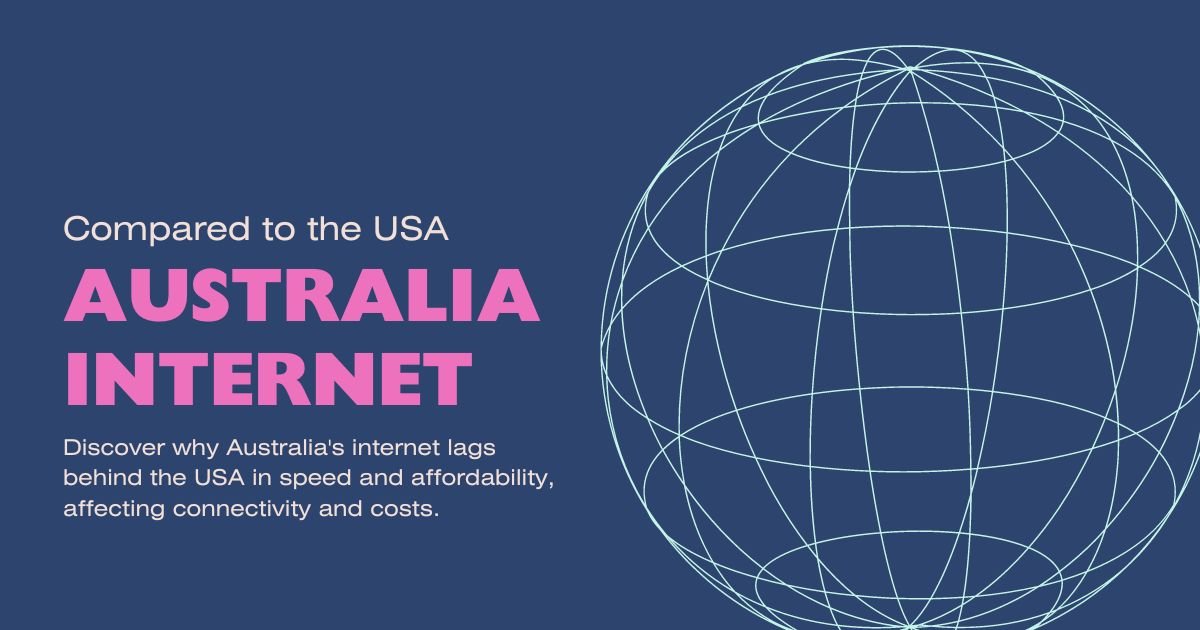
Australia’s internet infrastructure is under intense scrutiny due to its lagging performance compared to other developed nations, particularly the United States. According to the Speedtest Global Index, Australia ranks 64th worldwide for fixed broadband speeds, with an average download speed of 46.24 Mbps. This places it behind many developed countries, including New Zealand, which sits at 50th with a faster average download speed of 73.87 Mbps. The disparity is even more glaring compared to the United States, where internet speeds are significantly faster and more affordable.
Australia’s Internet Infrastructure Falls Short
Australia’s internet woes have far-reaching implications, affecting various facets of daily life, from work productivity to online education and entertainment. Despite being a developed country, Australia’s internet infrastructure is often criticized for its slow speeds and high costs. The situation becomes more frustrating when juxtaposed with the rapid advancements seen in countries like the USA, rolling out lightning-fast 10Gbps internet plans at an astonishingly low $49 per month.
Oceania – Internet Speeds
The broader Oceania region, encompassing Australia and numerous Pacific islands, faces similar challenges. The average internet speed in Oceania is a modest 50.67 Mbps, lagging behind other regions. This slow speed is partly due to the geographical isolation and extensive distances that complicate the deployment and maintenance of undersea cables crucial for international connectivity.
Factors Affecting Internet Speed in Australia
Several factors contribute to Australia’s sluggish internet speeds. The country’s vast geography and low population density make implementing and maintaining high-quality internet infrastructure costly. The shift from the ambitious Fiber to the Premises (FTTP) plan to a Multi-Technological Mix (MTM) approach has been particularly controversial. Originally intended to provide high-speed connectivity directly to homes, the FTTP plan was altered by the government to utilize existing copper cables, resulting in higher costs and delays.
High-Cost Low-Speed Internet
Australia’s internet services are slower and significantly more expensive than other countries. Major providers like Telstra, Optus, and Vodafone dominate the market, leading to higher consumer prices. A stark example of this disparity is evident when comparing the cost and speed of internet services. In the US, consumers can access 6Gbps internet for around $49 monthly. In comparison, Australians often pay around $105 monthly for speeds up to 50 Mbps.
Australia’s Explanation for Slow Internet Speeds
The primary explanation for Australia’s slow internet speeds revolves around its large landmass and low population density. The cost of deploying high-speed internet infrastructure across such a vast area is prohibitive. Moreover, the geographical isolation from major internet exchange points in North America and Europe exacerbates latency issues, further slowing down internet speeds.
Government Policies and Historical Missteps
Australia’s National Broadband Network (NBN) project, launched in 2009, aimed to address these issues but has faced numerous setbacks, including delays and cost overruns. The original plan to implement FTTP technology was replaced with a more complex MTM approach, leading to a suboptimal outcome. Critics argue that if the initial FTTP plan had been followed, the project would have been more successful and cost-effective.
A Comparative Perspective
The digital divide between Australia and countries with superior internet infrastructure highlights the growing gap in global internet accessibility and quality. While Australia struggles with internet speed and affordability, countries like Monaco, Singapore, and Chile lead the world with average speeds exceeding 250 Mbps. The widening gap affects individual users and has broader implications for education, business competitiveness, and overall economic development.
Conclusion
Australia’s internet infrastructure faces significant challenges, reflected in its slow speeds and high costs. The contrast with countries like the United States, which offer far superior internet services at a fraction of the price, underscores the need for substantial reform in Australia’s approach to internet provision.